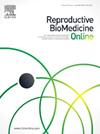一个可解释的基于超声的机器学习模型,用于预测冷冻胚胎移植后的生殖结果。
IF 3.7
2区 医学
Q1 OBSTETRICS & GYNECOLOGY
引用次数: 0
摘要
研究问题:能否开发出最优的机器学习模型来预测冷冻胚胎移植(FET)后的生殖结果?设计:这项前瞻性研究纳入了787名接受FET治疗的不孕女性。参与者被分成训练组(n = 550)和测试组(n = 237),比例为7:3。从子宫内膜和结缔组织的超声图像中提取放射组学特征。建立放射组学模型生成放射组学评分(rad评分)。采用Logistic回归对临床资料进行处理,建立临床模型。使用XGboost算法将rad评分与独立临床数据整合,建立融合机器学习模型。利用接收机工作特性曲线下面积(AUC)对模型的性能进行了比较。SHapley加性解释(SHAP)方法用于解释和可视化特征对FET结果的贡献。结果:在训练队列中,融合模型表现出优越的性能,AUC为0.861 (95% CI 0.829-0.890),超过临床模型(AUC 0.680, 95% CI 0.635-0.722;P < 0.001)和放射组学模型(AUC 0.814, 95% CI 0.777-0.848;P < 0.001)。SHAP汇总图显示了每个特征对预测模型的影响,rad评分是主要特征。SHAP力图在个体层面上提供了解释。结论:利用临床数据和超声图像建立了一个可解释的机器学习模型来预测FET的结果。通过使用SHAP方法,临床医生可以更好地了解个别患者FET结果的影响因素,并在FET前做出更好的决策。本文章由计算机程序翻译,如有差异,请以英文原文为准。
An explainable ultrasound-based machine learning model for predicting reproductive outcomes after frozen embryo transfer
Research question
Can an optimal machine learning model be developed to predict reproductive outcomes following frozen embryo transfer (FET)?
Design
This prospective study included 787 infertile females who underwent FET. The participants were split into a training cohort (n = 550) and a test cohort (n = 237) at a ratio of seven to three. Radiomics features were extracted from ultrasound images of the endometrium and junctional zone. A radiomics model was developed to generate the radiomics score (rad score). Logistic regression was applied to process the clinical data and create a clinical model. A fusion machine learning model was developed by integrating the rad score with independent clinical data using the XGboost algorithm. The performance of the models was compared using the area under the receiver operating characteristic curve (AUC). The SHapley Additive exPlanations (SHAP) method was used to interpret and visualize the contributions of features to the outcomes of FET.
Results
The fusion model demonstrated superior performance, as indicated by an AUC of 0.861 (95% CI 0.829–0.890), in the training cohort, surpassing both the clinical model (AUC 0.680, 95% CI 0.635–0.722; P < 0.001) and the radiomics model (AUC 0.814, 95% CI 0.777–0.848; P < 0.001). The SHAP summary plot reveals the impacts of each feature on the predictive model, and the rad score was found to be the main feature. SHAP force plots provided explanations at the individual level.
Conclusion
An explainable machine learning model was established utilizing clinical data and ultrasound images to forecast the outcomes of FET. By utilizing the SHAP method, clinicians may better comprehend the contributors to the outcomes of FET in individual patients, and make better decisions before FET.
求助全文
通过发布文献求助,成功后即可免费获取论文全文。
去求助
来源期刊

Reproductive biomedicine online
医学-妇产科学
CiteScore
7.20
自引率
7.50%
发文量
391
审稿时长
50 days
期刊介绍:
Reproductive BioMedicine Online covers the formation, growth and differentiation of the human embryo. It is intended to bring to public attention new research on biological and clinical research on human reproduction and the human embryo including relevant studies on animals. It is published by a group of scientists and clinicians working in these fields of study. Its audience comprises researchers, clinicians, practitioners, academics and patients.
Context:
The period of human embryonic growth covered is between the formation of the primordial germ cells in the fetus until mid-pregnancy. High quality research on lower animals is included if it helps to clarify the human situation. Studies progressing to birth and later are published if they have a direct bearing on events in the earlier stages of pregnancy.
 求助内容:
求助内容: 应助结果提醒方式:
应助结果提醒方式:


